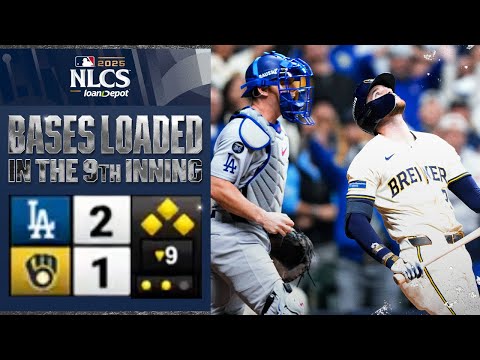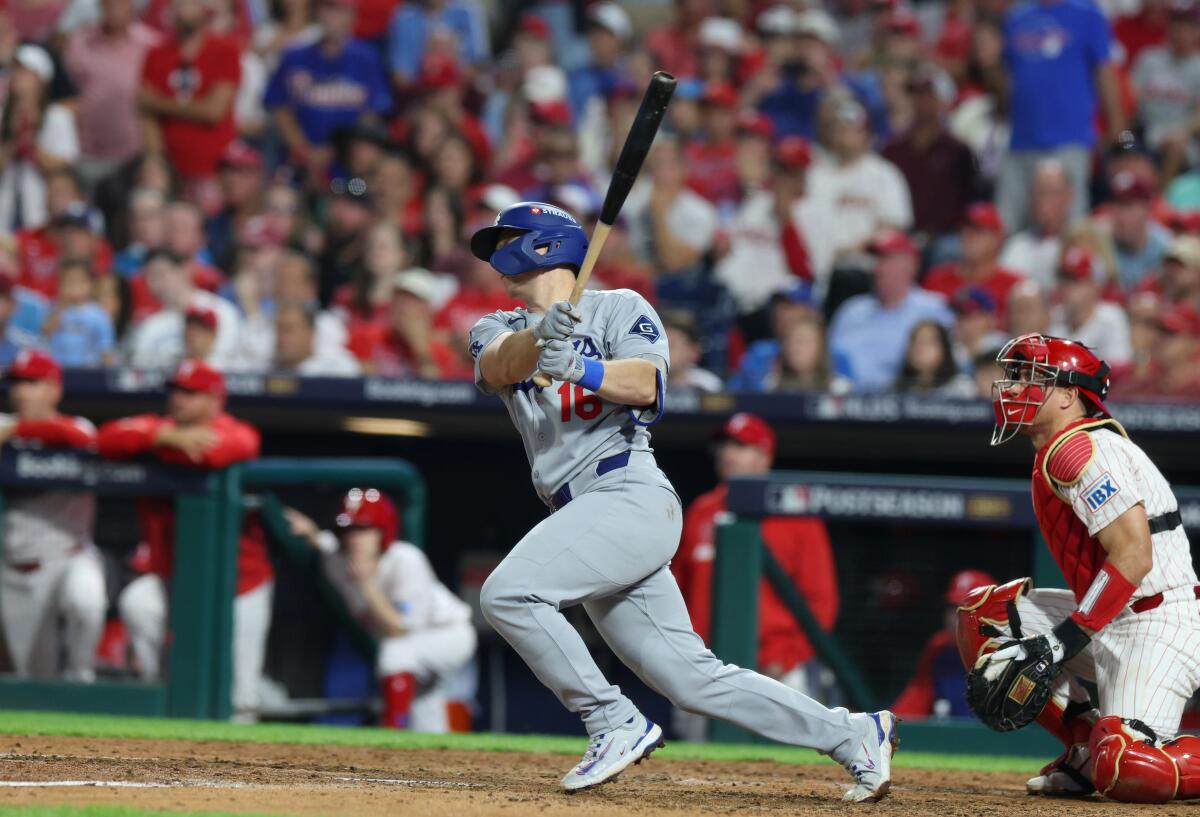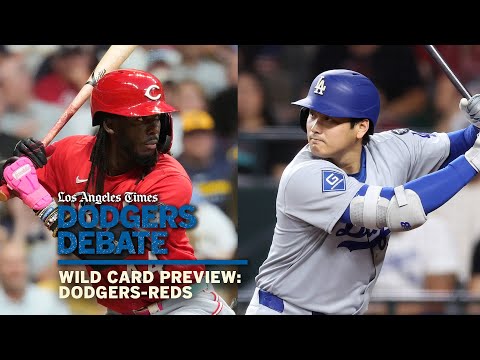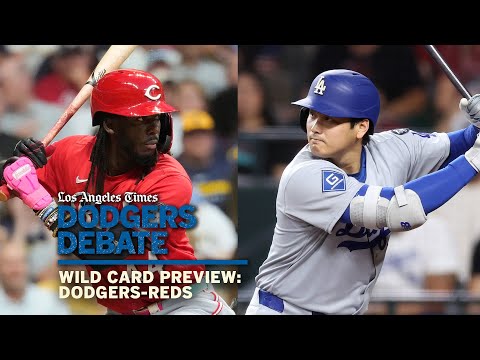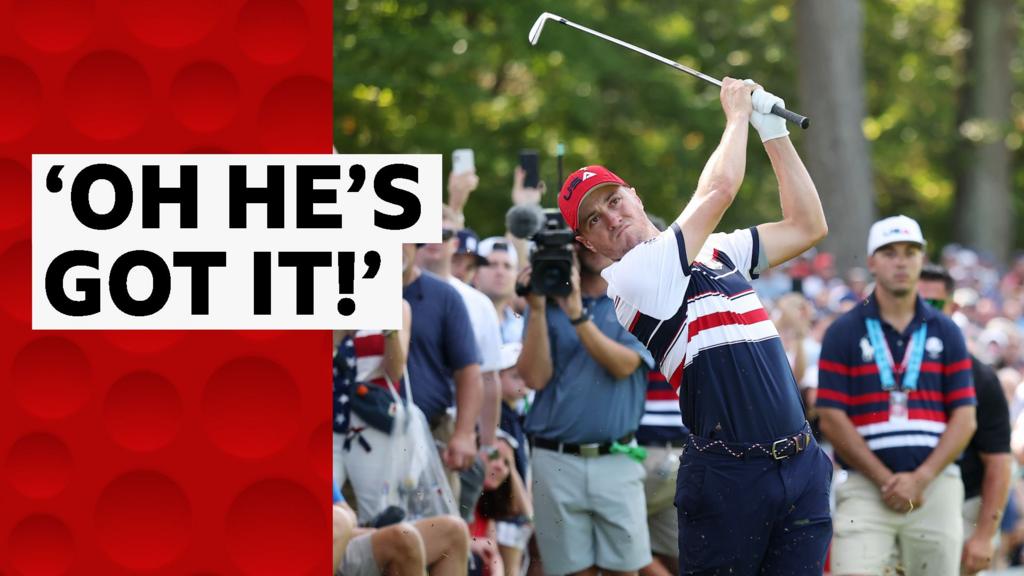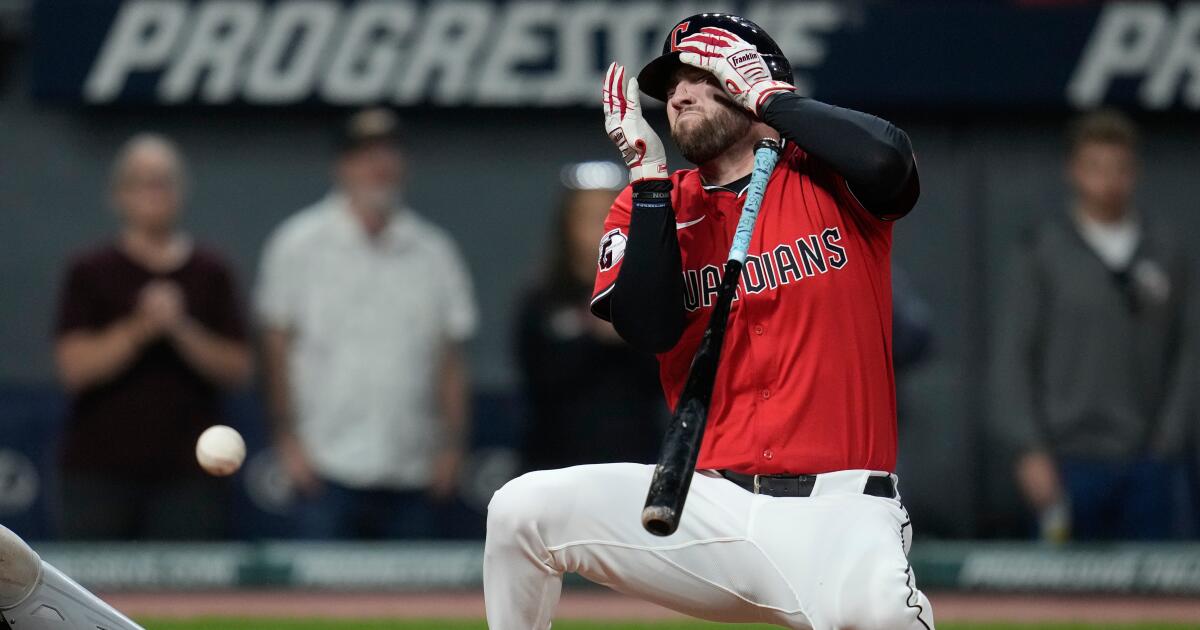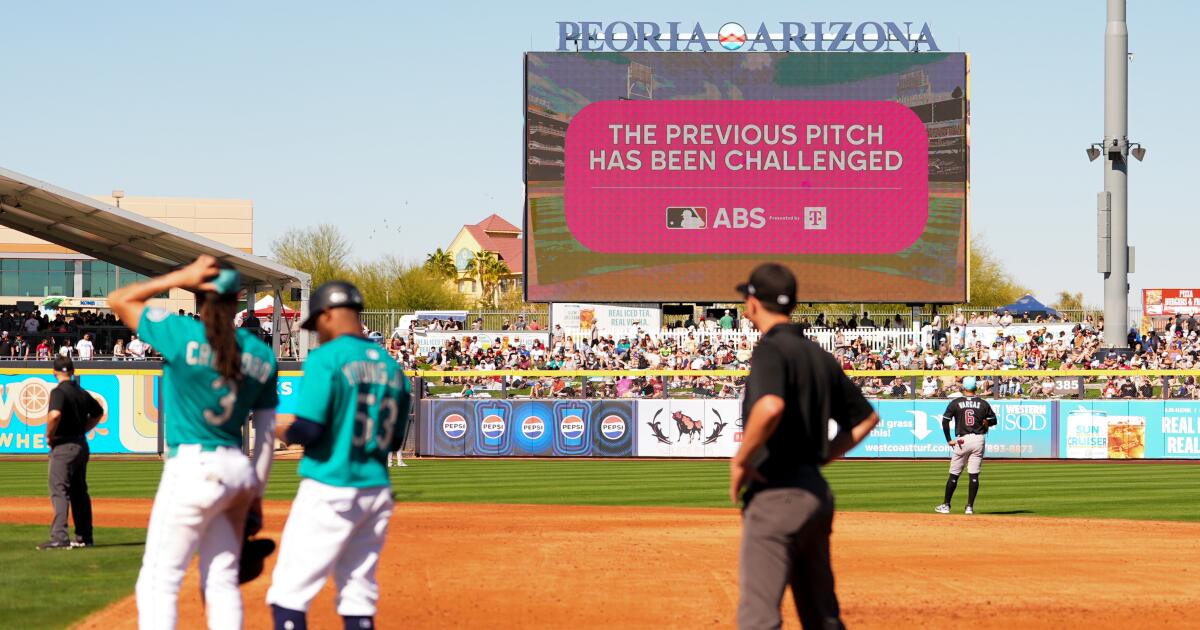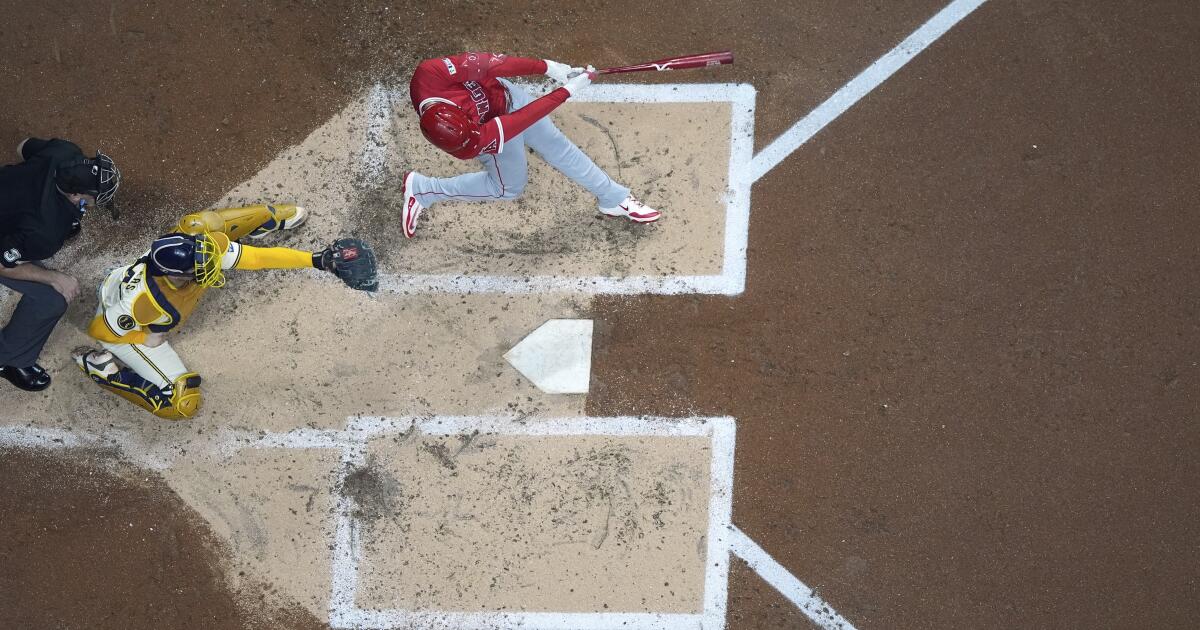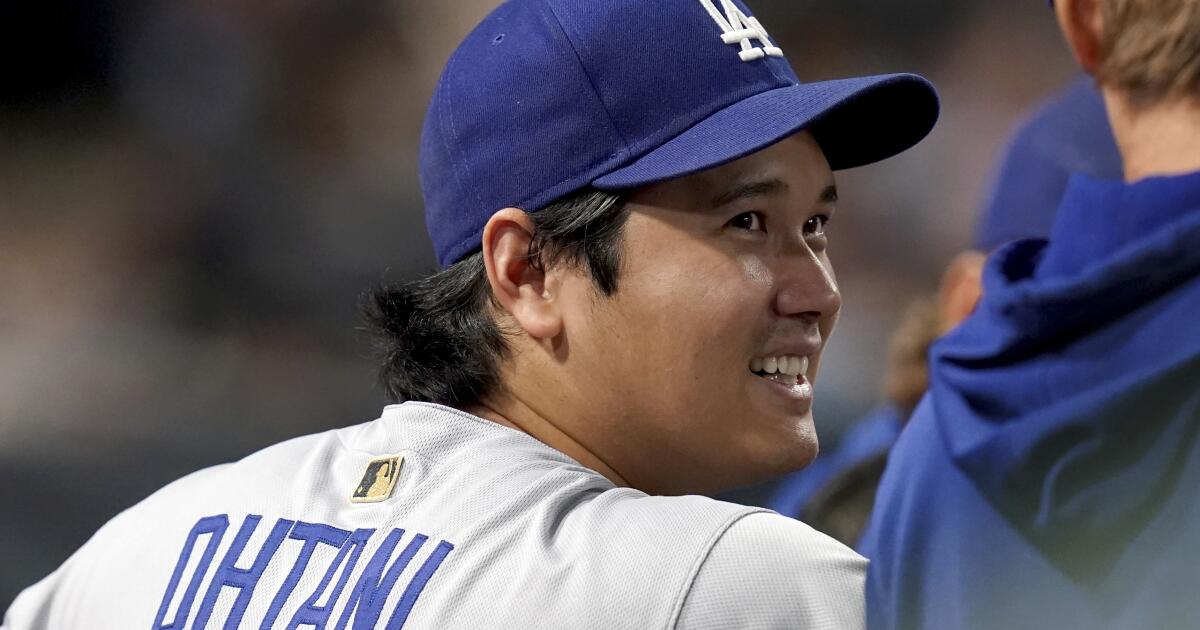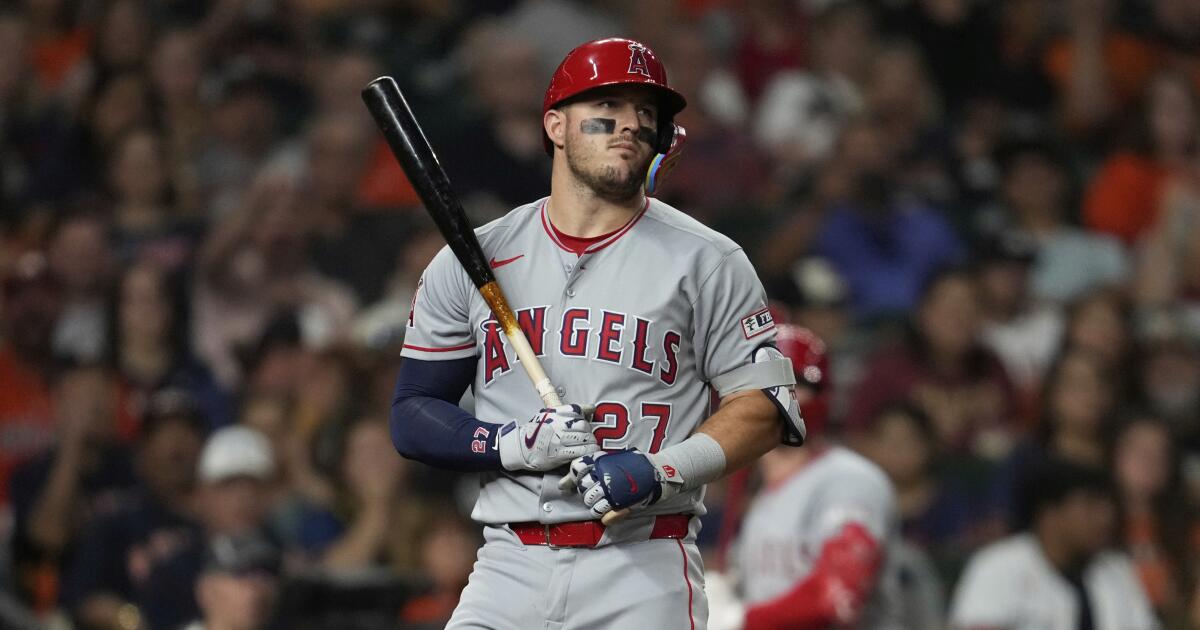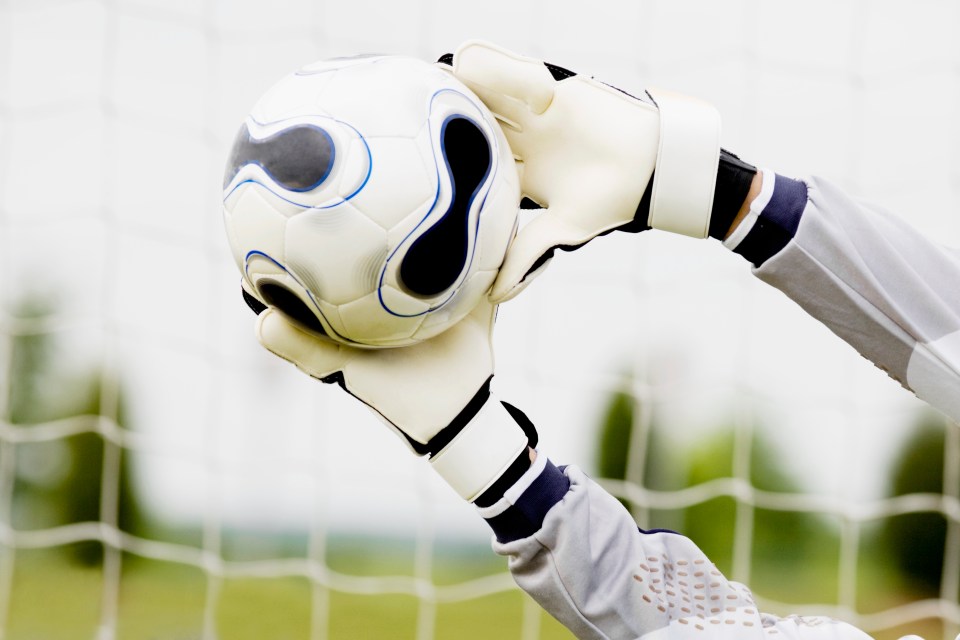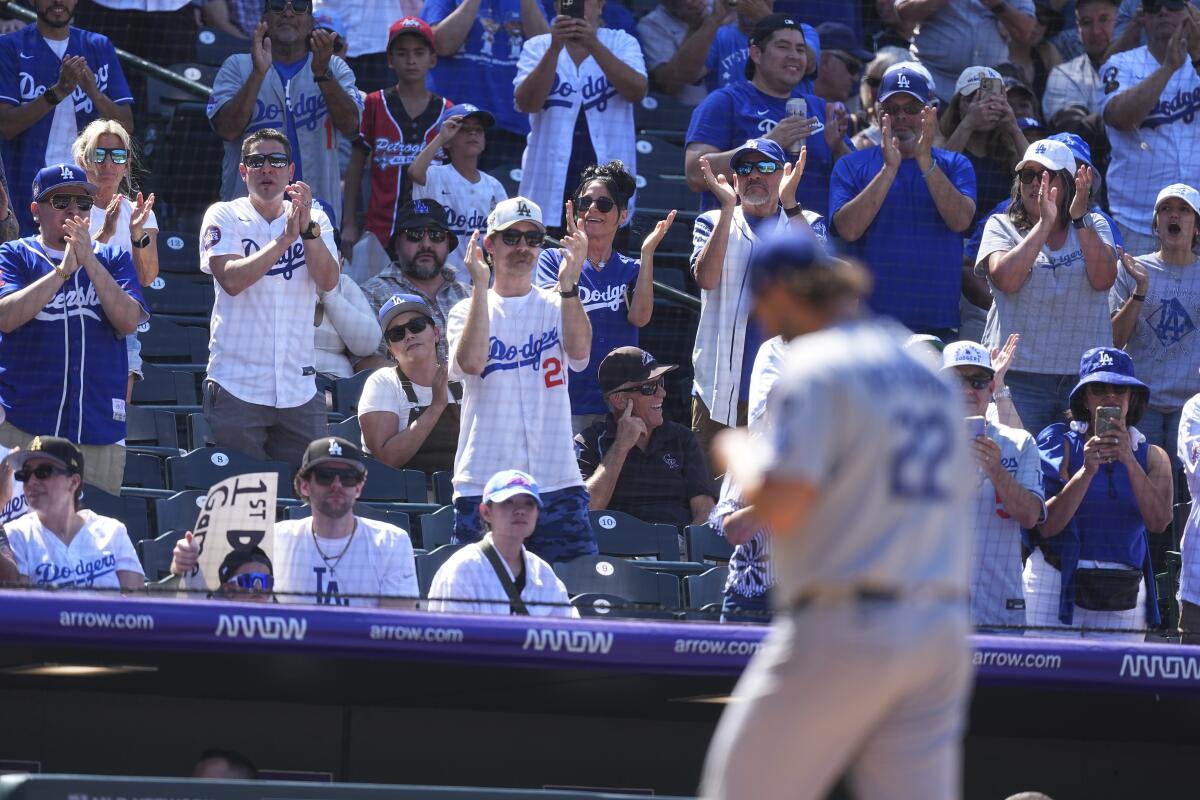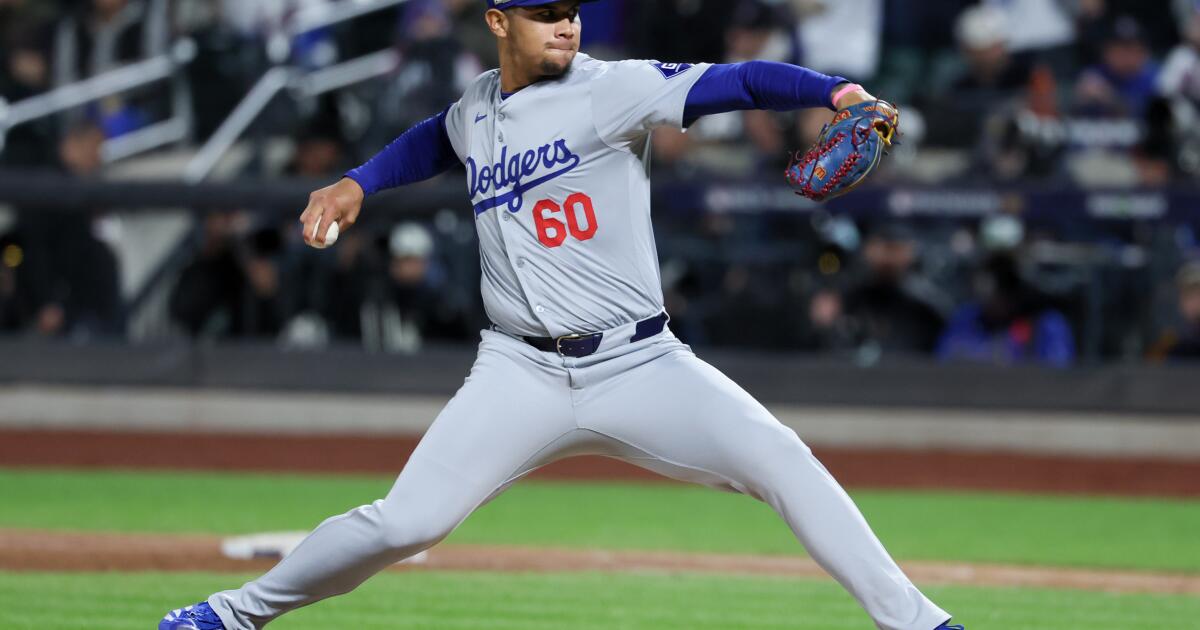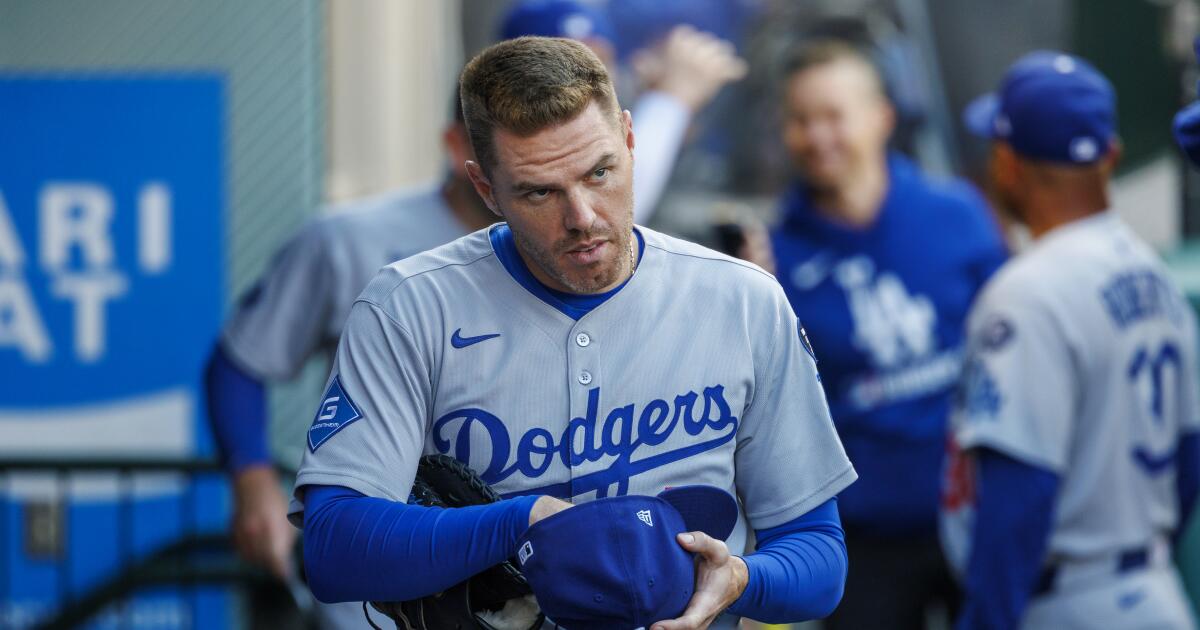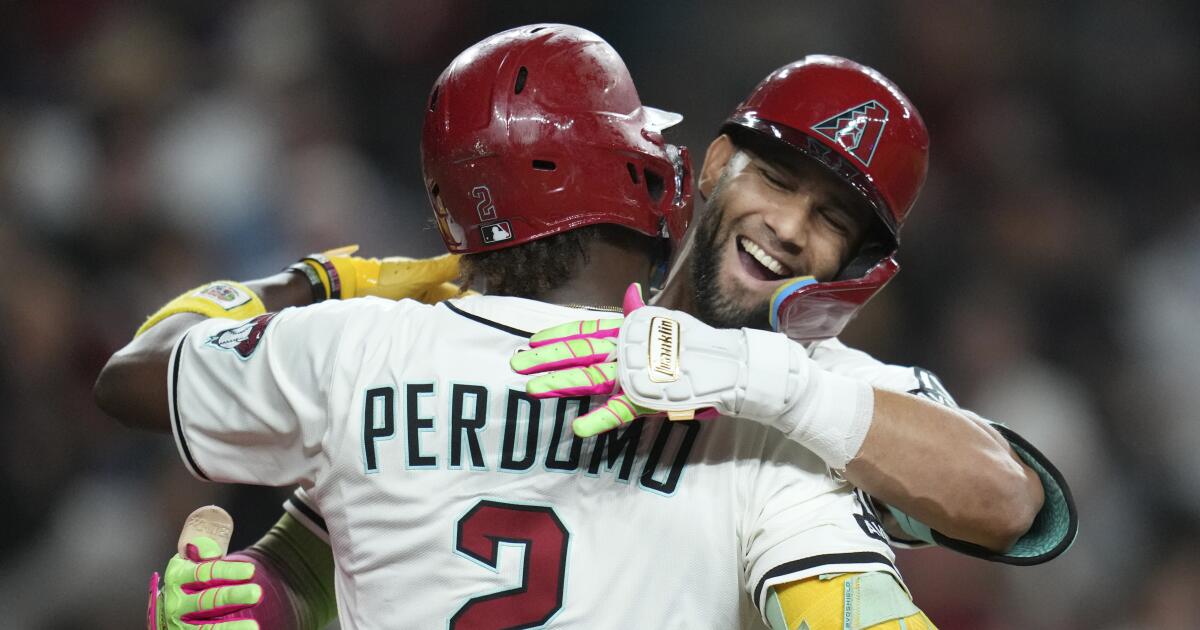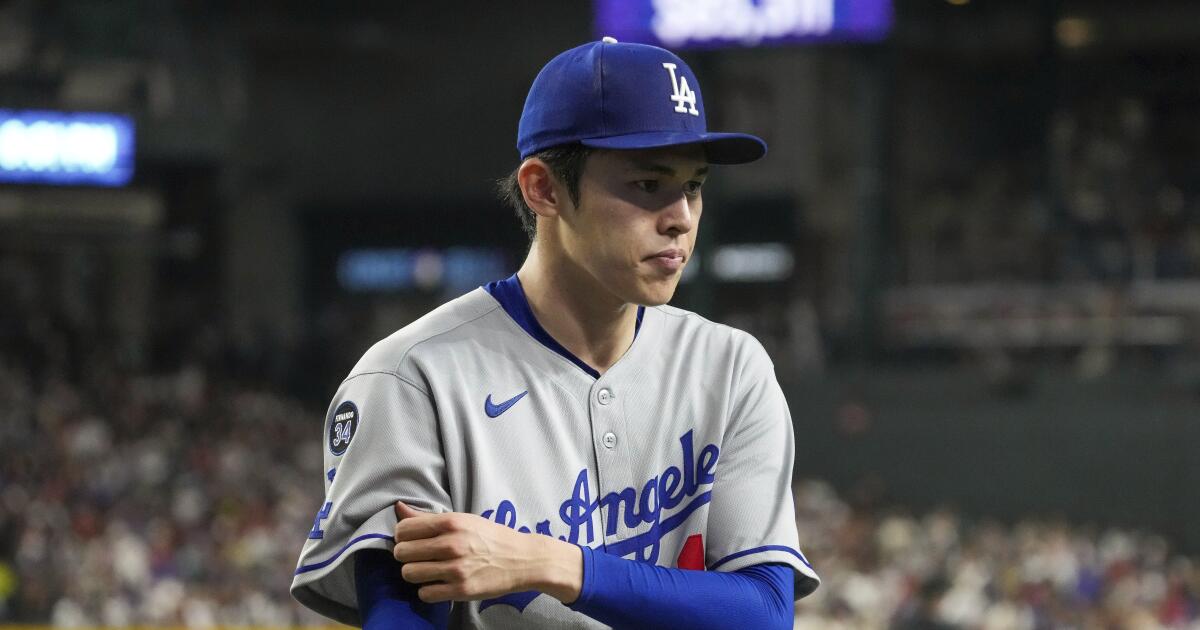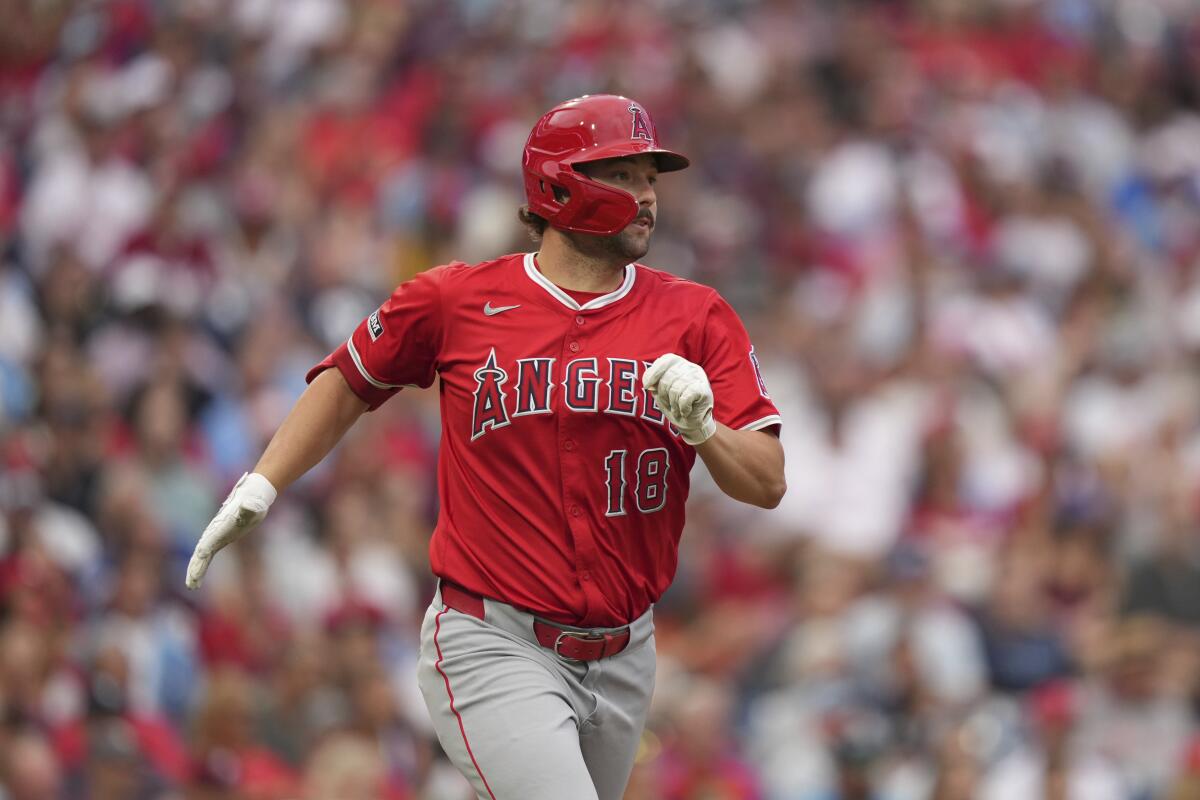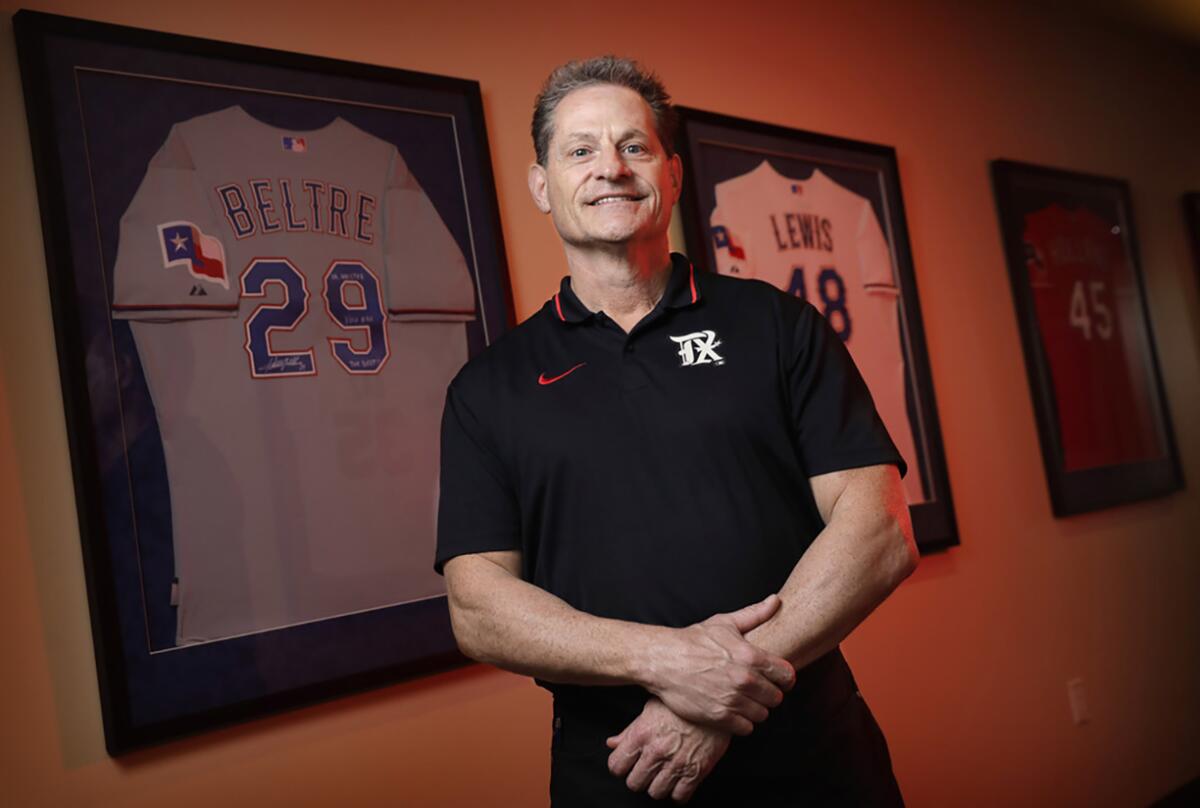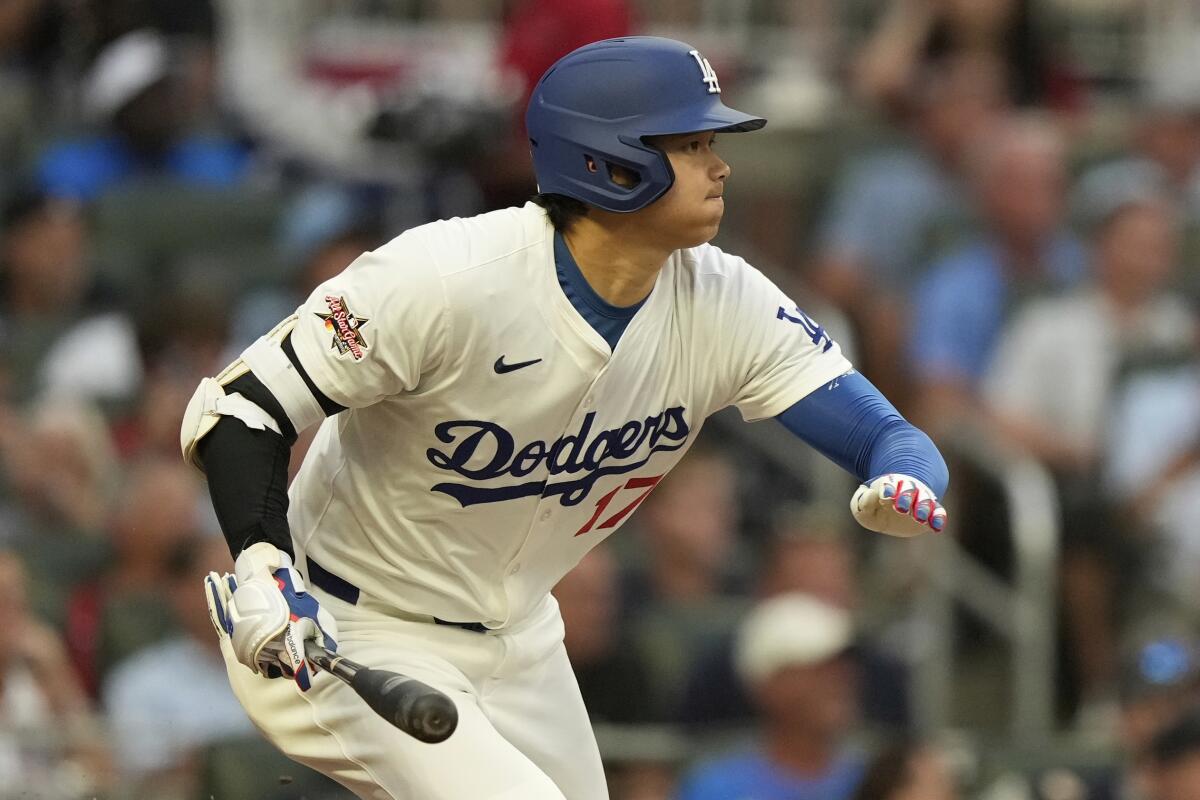It took some luck, but good things finally happen to Dodgers’ Blake Treinen
MILWAUKEE — Blake Treinen’s first save of the postseason was hardly a memorable performance.
He threw more balls than strikes. He walked the first batter he faced and nearly hit the second. And he got the final out on a pitch that was well out of the strike zone.
But he did get the final out, preserving the Dodgers’ 2-1 win over the Milwaukee Brewers in the opening game of the National League Championship Series on Monday.
And for Treinen and the bullpen he’s supposed to be anchoring, that counts as major progress.
“We’ve been putting in a lot of work to try to get some things in a better place with myself,” Treinen said. “Today, I thought I executed almost every pitch.”
The fixes, he said, were simple mechanical tweaks that helped set up his pitches.
“Sometimes through catch-play and touching the mound a little bit, things start to click. And you’re kind of shocked at how a subtle tweak can change everything,” he said.
In the Dodgers’ World Series run last season, Treinen was as vicious as an ill-tempered Doberman, going 2-0 with three saves, a 2.19 ERA and 18 strikeouts in 12 1/3 innings.
This year, not so much. In his first four playoff appearances more batters got a hit than struck out and five of the 12 men he faced reached base. That followed a disastrous September in which he went 1-5 with a 9.64 ERA.
He wasn’t so much putting out fires as he was starting them. The poor performances began to build on one another.
“At times this year, when it hasn’t gone well, th[ings] can speed up a little bit in your mind,” he said. “That’s the hard part, to carry the thoughts and focus on what you’re good at.”
But manager Dave Roberts, who has had Treinen for the last five seasons, kept giving him chances to turn things around.
“I think the best way to for me to kind of view it is whether you’re a position player slumping or a pitcher maybe not getting the outs at the clip that you want, we all know what our abilities are,” Treinen said. “Dave’s seen me at my best and at my worst, and so when he calls my name, I’m grateful that he has confidence in me.
“And I have confidence that he’s putting me in situations for the team to win. So there’s a lot of peace in that.”
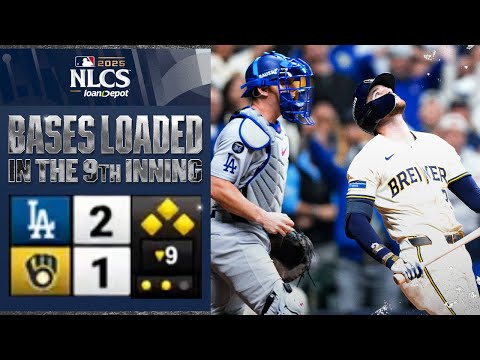
Treinen may have been at peace but he didn’t have much wiggle room when he replaced Roki Sasaki on the mound Monday with two out in the ninth and the Dodgers clinging to a one-run lead.
Sasaki, the team’s surprise playoff closer, had been lights out in the postseason, with just one of the 17 hitters he faced reaching base. Against the Brewers, he gave up two walks, a ground-rule double and a run-scoring sacrifice fly in the span of two outs. When Treinen entered, Milwaukee had the tying run on first and the winning run on third — and the right-hander immediately made things worse by walking William Contreras on six pitches to load the bases.
Treinen quickly got ahead of Brice Turang, the Brewers’ left-handed cleanup hitter, but courted disaster again when he sailed a 1-2 sweeper that nearly hit Turang. That would have forced in the tying run had Turang not instinctively danced out of the way, eliciting a groan from the sold-out crowd.
“It’s a natural reaction,” Milwaukee manager Pat Murphy said. “When the ball is coming towards you, it’s a breaking ball, your natural reaction is to do that.
Dodgers pitcher Roki Sasaki delivers in the ninth inning against the Brewers in NLCS Game 1 on Monday.
(Gina Ferazzi / Los Angeles Times)
“It happens. He’ll learn from that situation. But it’s hard.”
For Treinen, whose only luck lately has been bad luck, the break was one he quickly cashed by getting Turang to chase the next pitch, which was head high, to end the game.
That swing brought equal measures of joy and relief for Treinen, who has supplied little of either for the Dodgers this postseason. This time, he said it felt good to finally be able to contribute.
“Our guys have been playing great baseball,” he said. “Our bats are doing a great job. Our starters have been amazing. So [I’m] just doing my job to finish the game.”
He also did his job in picking up Sasaki, the hero of the NL Division Series win over the Phillies, who stood to be the goat if the Dodgers lost Monday.
“Any time as a professional, when you have the ability to pick up your teammates, there’s a lot of pride in it,” Treinen said. “You just want to do your part because it’s a team game.
“I’ve certainly had guys pick me up this year. To have the opportunity to pick someone else up, it feels good.”
And it’s been a long time since Treinen has felt that.
